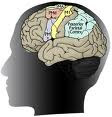

- Lost revenues
- Lost market share
- Acquisition costs
- Loss of cross/up-selling opportunities
- Lost Customer Lifetime Value
- Negative word-of-mouth
- Ineffective advertising
This blog is dedicated to the discussion of engaged companies and how to become engaged for better results. By examining best practices in 5 key areas of the organization: Strategy, Leadership, Culture, Employees and Customer, companies can understand how to successfully and uniquely engage at all levels.






Stephen Sadove is a leader I can follow. The CEO of Saks, Inc. was interviewed by the New York Times recently and was asked about his leadership philosophy. His response was that leadership drives culture, which drives business results. Mr. Sadove went on to say that while Wall Street never asks about leadership, culture or people, they actually are what drive numbers and results. Mr. Sadove, you are my hero.
Trying to define organizational culture is a little like nailing Jell-o to a wall: slippery, messy and just plain hard. But, when a leader understands that the harder- to -grasp organizational elements actually make up the engine that propels results, we are at least half way to having a company that truly is engaged. While many C-Suite occupants are comfortable with spreadsheets and analytics (and no one would argue their essential value), the numbers don’t happen by accident or in a vacuum. It takes a lot of deep searching to arrive at a culture design that supports the results you want.
I recently saw a presentation by Reed Hastings, CEO of Netflix who, while not a fan of process, nevertheless, put the steps for embedding Values, Strategy, Leadership and People into a framework he calls Freedom and Responsibility Culture:
How Do We Define Success? For Netflix, business results are “continuous growth in revenue, profits and reputation”.
How Are We Going to Get There? Hastings defined the strategy as “rapid innovation and excellent execution”.
How Does Our Environment Support Our Strategy? Netflix’s culture specifically supports “effective teamwork of high performing people”.
What Would Jeopardize Our Success? For Reed Hastings, it is a culture that tolerates rigidity, politics, mediocrity and complacency.
From this high level, Netflix is able to articulate how its Values are embedded in its culture and specifically defines behaviors that will be rewarded and those that result in being cut from the team. There is no room for ambiguity in Reed Hastings’ vision of success, which means that employees know exactly what is expected of them (part of a team of high performing people) and how their jobs contribute to the company’s success goals (innovating and executing).
We are in an environment today which demands that we stand out in every way. To ignore organizational culture is to sabotage your business success.
Can you answer the four questions above for your company? Can your employees?

